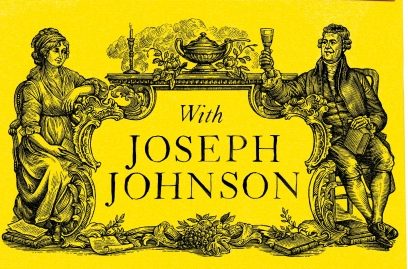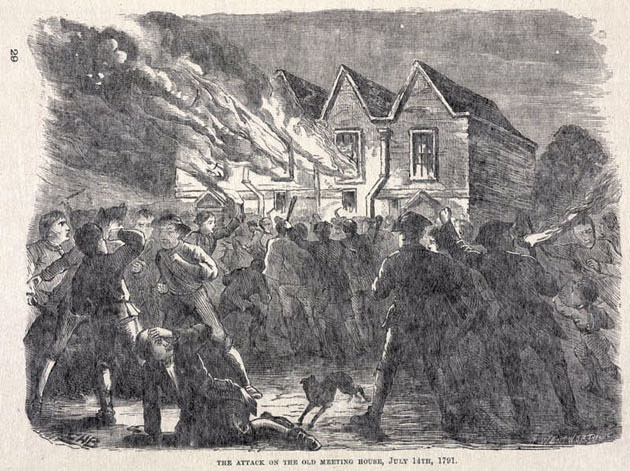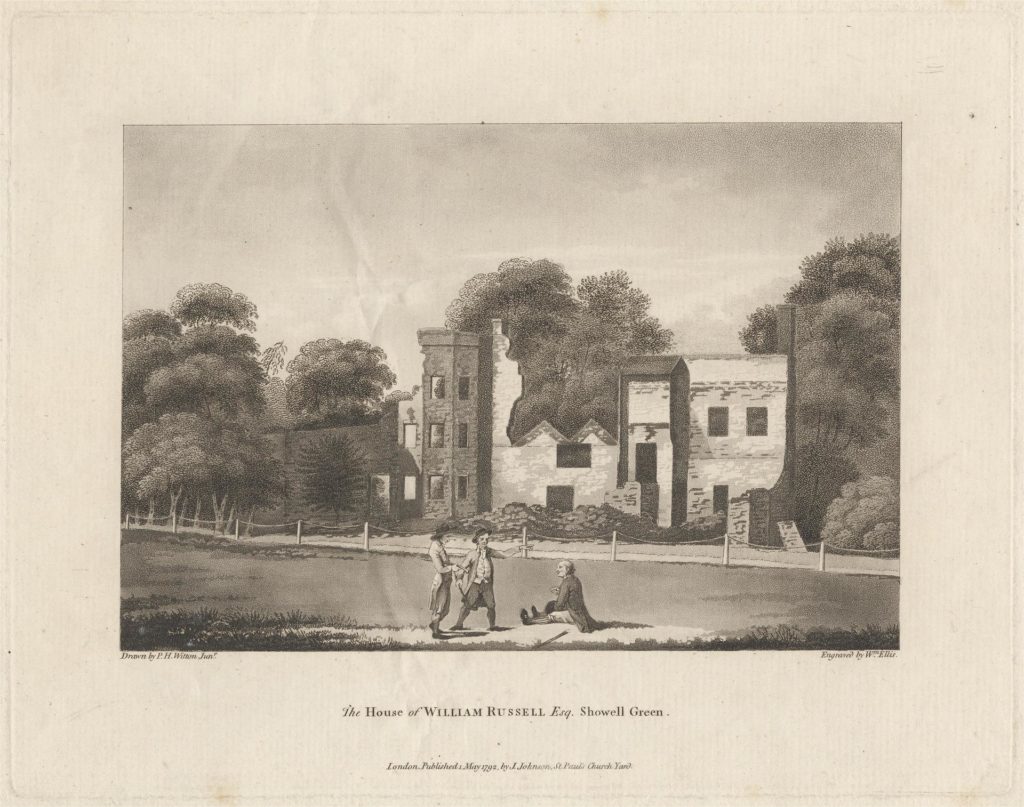Daisy Hay: Stories of Romantic Birmingham

Arts of Place and Oxford Centre for Life-Writing Annual Lecture: Joseph Priestley, Joseph Johnson, Ruins and Riots
Tuesday 3 May 2022, 5.30pm, the University of Birmingham

We were delighted for Daisy Hay (University of Exeter) to give the second OCLW and Arts of Place Annual Lecture. Daisy’s book, Dinner with Joseph Johnson, is an extraordinary account of writing, publishing, and friendship in a revolutionary age — and Birmingham is central to the story.
“The crowd ran riot through Birmingham, and its surrounding towns and villages, for four days. Four dissenting chapels were damaged or destroyed, along with twenty-seven private houses”.
Daisy returned us first to Joseph Priestley, Unitarian intellectual dissenter; to Birmingham in the midst of industrial transformation; and to the night of July the 14th, 1791 and the beginning of the Birmingham riots, where Birmingham dissenters, Priestly among them, paid a high price for clashing with church and state:
“The Priestleys bundled into the chaise with nothing but the clothes they stood in, leaving their grown-up sons to defend the house. They drove to the house of their friend and fellow dissenter William Russell who lived a mile away. From Russell’s windows they could see the meeting house was on fire, and as they struggled to comprehend what they were seeing news arrived that the crowd had arrived at Fair-hill, and that the crowd was threatening to destroy Russell’s house too, so they got back into the chaise and were driven on another mile to the Hawkes’ at Moseley Green. Hawkes’ house was on higher ground and from his windows Priestley could see Fair-hill in the distance […] hearing shouts of exaltation as the crowds arrived at his house and his defences gave way. Priestley’s sons had extinguished all the hearth fires before they made their own escape, so the crowd had to make do with weapons and fists as they set about destroying Priestley’s home. […] In their rage they destroyed all of Priestley’s scientific apparatus, as well as his manuscripts and his library, which was completely invaluable. They ransacked the cellars and drank themselves into a further frenzy, before finally setting fire to the ruins. For the whole of the next day, July the 15th, the rioters roamed the city, destroying the houses of dissenters at will.”
Daisy speaks on the consequences of these incendiary riots. The circle around Johnson and Priestley deliberate upon the politics of dissent; publicise the manipulations of state; and lead us through ruins literary and allegorical.
The ruins of Birmingham stand for the realisation of a dissenting nightmare, a long-anticipated physical substantiation of state aggression. But they also stand as symbols of unity: between different contemporary dissenting groups, and between the present, and a socially remembered and recorded past of dissenting unity and persecution.
We are finally brought to consider the potentials of the safe harbour of friendship for fostering intellectual freedom: a potential manifested in Johnson’s dining room at 72 St Paul’s Churchyard, London. Rather than just a place of refuge, Johnson’s sanctuary becomes emblematic of a new kind of home: a “capacious, generous space from which people could come and go” and from which cultural movements could be born.
Listen to Daisy’s wonderful lecture below:

One print published in Johnson’s 1792 The Riot’s of Birmingham, July 1791, illustrating the ruin of Russell’s Showell Green house.
Images:
Robert Dent, ‘Destruction of Old Meeting Chapel’, in Old and New Birmingham (1879); William Ellis, ‘The House of William Russell Esq. Showell Green’, from The Riots at Birmingham, July 1791‘, published by Joseph Johnson in 1792.